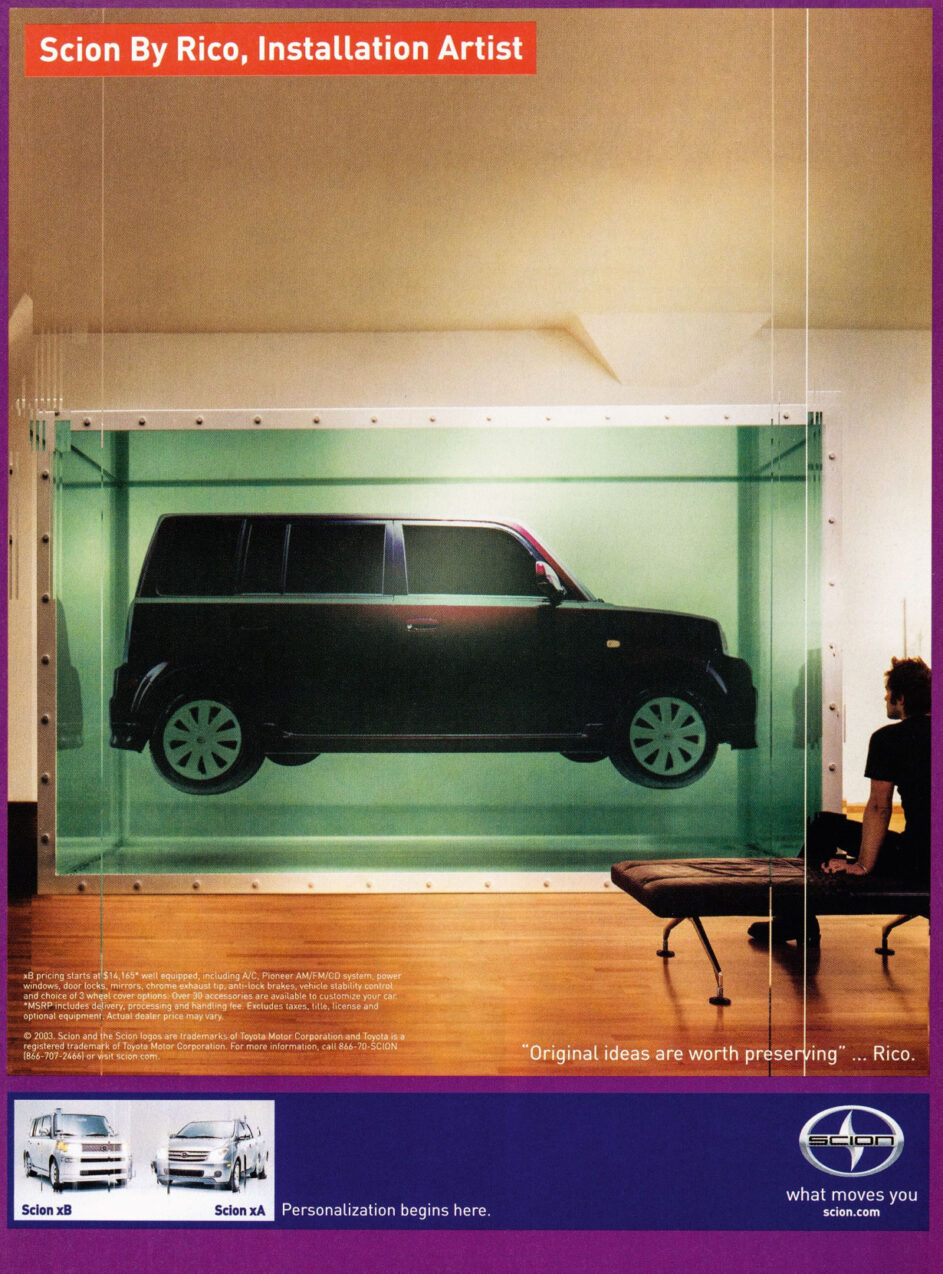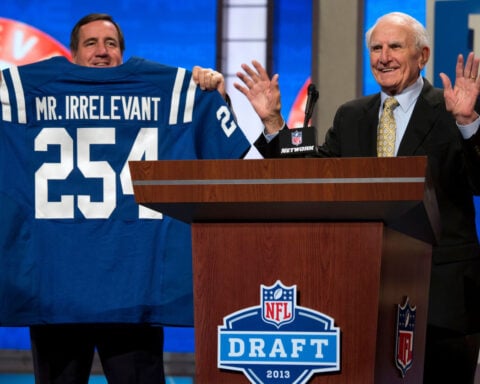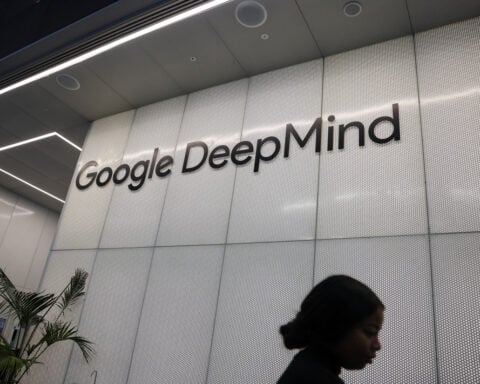(CNN) — In the year 2000, HBO advertised Ellen DeGeneres’ latest comedy special with a Botticelli reference. Perched inside a clam shell and surrounded by figures from the original painting, DeGeneres created her own “Birth of Venus” for the promotional print poster — subbing out nudity for a more signature white pantsuit. (Both HBO and CNN share the parent company Warner Bros. Discovery).
Three years later, for a magazine advertisement, the now-defunct British car brand Scion decided to reproduce Damien Hirst’s controversial sculpture “The Physical Impossibility of Death in the Mind of Someone Living” (1991) by suspending their XII model in a tank of seafoam green formaldehyde. In the same decade, there was a surprisingly artistic print artwork for the sixth season of the popular 2005 CBS TV show “CSI: Crime Scene Investigation”. In the ad, cast members gaze through the window of a neon-lit diner lifted straight out of American painter Edward Hopper’s seminal painting “Nighthawks” (1942).
Each of the campaigns may appear to have little in common, but they reveal an unmistakable truth about the advertising industry: before digital marketing became the norm, overtaking print in terms of revenue and budget allocation, there was arguably more room for complex, creative and daring image-making. Jim Heimann, graphic designer, historian and the editor of the forthcoming book “All-American Ads of the 2000s” — available in the UK from April 14 and in the US a month later — is worried these might be the last of their kind. “Print is slowly disappearing. That’s a problem,” he said.

‘The material isn’t there anymore’
Like a skilled archaeologist, Heimann has spent his life hunting down and preserving American cultural relics, such as cocktail napkins collected while researching the country’s penchant for drive-in restaurants to travel brochures from the early 20th century.
A fixture at Sunday flea markets for the last 50 years, Heimann finds they are a good location to scour for magazines — often the first thing to go following a home clearout, he said. He normally turns to eBay to source specific ads, despite the added cost, and takes care to cherry pick from across pop culture, selecting the most artfully designed campaigns for top movies, popular games and even beloved cereal brands, among others. With each decision, he’s thinking: “What would I want to revisit 20 years from now?”
In 2000, Heimann was commissioned by Taschen to create a series of books that mapped the visual fluctuations of the advertising industry. He started with the 1950s, a post-war period often referred to as the golden age of capitalism in the US, sourcing John Wayne-fronted Camel ads, glossy Cadillac double-page spreads and kitschy lingerie illustrations. Then he went back to the ‘30s, the ‘40s and jumped forward to the ‘60s, following each decade until the last tome cataloging the Wild West of the ‘90s hit the shelves in 2022. This edition on the aughts, however, will likely conclude the collection. “We had a discussion about doing 2010 to 2020,” Heimann told CNN in a video call. “But the material just isn’t there anymore.”
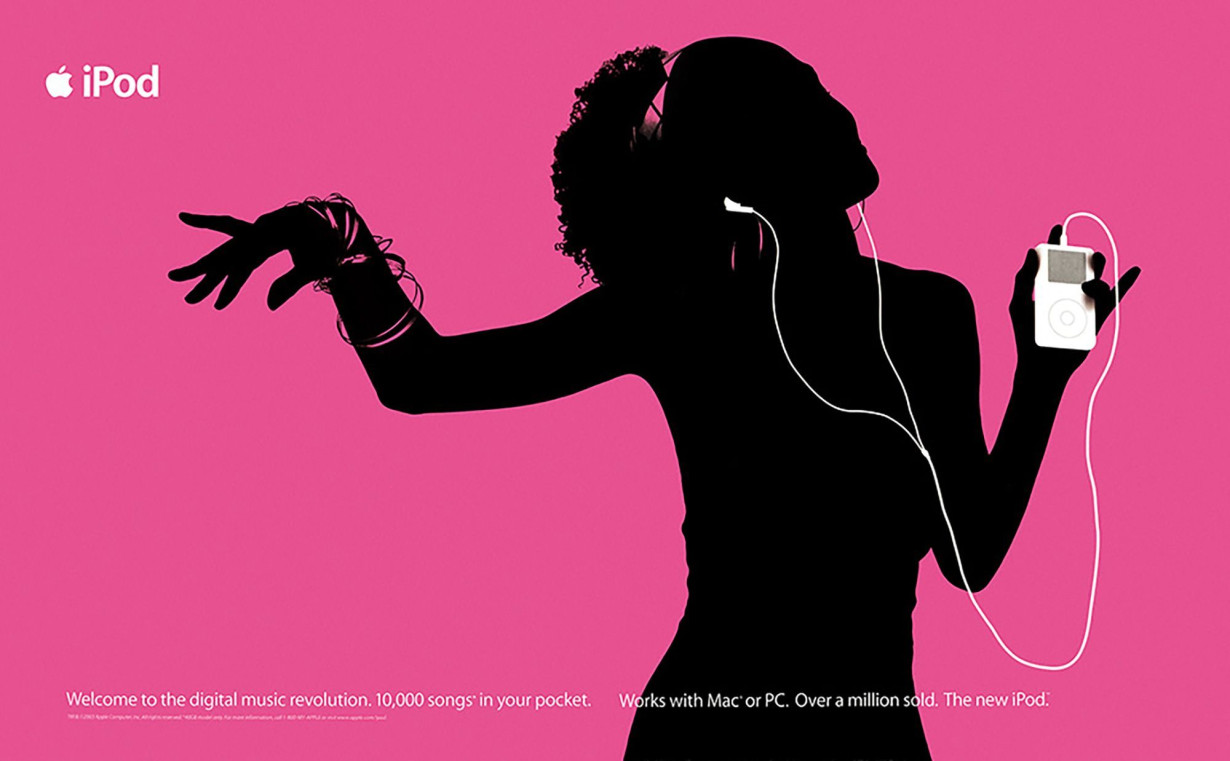
Chronicling the earlier part of the decade has proved difficult. As the book’s foreword by Steven Heller, former senior art director of the New York Times, reads: “Advertising did not change when the Times Square ball fell at the stroke of midnight on January 1, 2000, but the industry began its creative decline in the 2000s” — a period when digital advertising was starting to creep in. When Google launched its AdWords platform in 2000, small businesses could eschew forking out for expensive visual campaigns and instead promote themselves on Google’s search results page with text-based adverts. By 2001, television had surpassed newspapers in terms of ad revenue for the first time in the US.
These developments mark “the end of a century of advertising,” said Heimann.
Societal shifts
For Heimann, ads offer insight into the values and aspirations as well as political and economic environments of a generation. On compiling them in the book, he explained: “We always have a staple of 10 categories, but we expand them according to the decades. For instance, in the 1940s we had to expand war-related ads. They were really predominant, all these companies that were no longer producing automobiles or tires were doing everything for the war effort.”

In the aughts, many of the ads were focused on technology. “The tech world just blew up,” Heimann said. “Everything fell into that (category) consistently.” It was the 10-year-period that saw the invention of the first ever iPhone, the iMac, the iBook, the MacBook, the iPad, the iPod, iPod Nano and iPod Mini — and that’s just Apple. Heimann also found old Motorola, Blackberry, Sony and Nokia ads, along with a slew of brands that are no longer in existence.
Amid a shift in societal attitudes towards sexuality and sexual freedom, the concept of “sex sells” became a common marketing strategy in the ‘70s — so much so that it would be difficult to tell the difference between a Dolce & Gabbana campaign and an ad for Durex, said Heimann. Sexual marketing imagery continues to be prevalent, despite advertising’s changing tides (see Jeremy Allen White’s racy Calvin Klein underwear campaign in 2024, which Heimann sought to collect but failed to find a print copy, even after searching through 15 men’s magazines at his local newsstand).
In a Gucci ad from 2002, a topless male model is photographed side-on, undoing the monogrammed belt of his ‘G’ embroidered jeans — the leather strap in-hand creating a “sophomoric suggestion of an enhanced male appendage,” wrote Heller in the book. A Tom Ford menswear shoot Heimann preserved from 2008 shows an entirely naked female model grabbing the crotch of a suited man. “Females are always exploited,” he pointed out. “But to the extent of how they exploit women just becomes (implausible).”
At least the French brand Sisley somewhat evened the score, with an advert of a nude man saddled up and being ridden by a fully clothed woman. Still, to Heimann, this level of sexualization is “toned down” compared to the material he has collected from the ‘80s and ‘90s. “Now, we’ve got this new era of hyper masculinity,” Heimann said, referring to Trump’s hypermasculine campaign messaging that called for a return of gender roles, as well as the rise of “manosphere” influencers such as Andrew Tate and Joe Rogan, who push male-supremacist viewpoints and call for the subservience of women on platforms such as YouTube. “Where’s that going to take us?” he questioned.
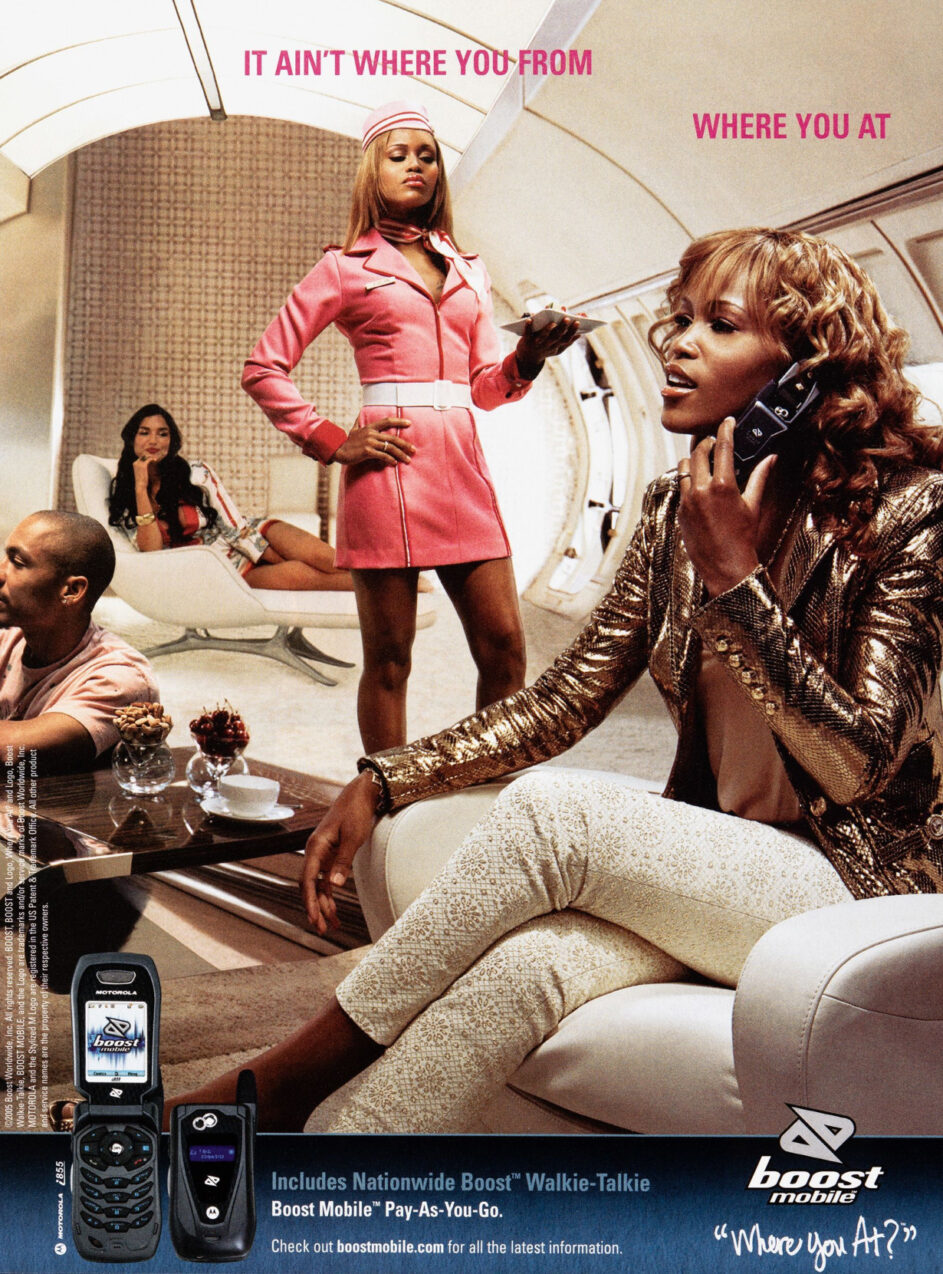
The future of ads
Between the leaps in AI technology and the new US administration, Heimann has questions not only on what adverts in the future might look like, but also who might be making them in the first place. It’s unlikely advertisers will want to spend on an agency to deliver a campaign when they can create them using AI for a fraction of the price. A recent study conducted by the University of Oxford suggests that AI-generated advertising images performed more effectively than human-made ones, as long as the images used do not look like artificial intelligence.
“Where will that creative world go?” Heimann mused. “It’ll have to play out, but it doesn’t bode well.” A fixation on cutting costs might only become greater in light of President Donald Trump’s anti-European initiatives and the recently announced 25% tariffs on imported cars among other products. “How do you sell a car that’s 25% more (expensive) than another car?” Heimann asked. “Who’s going to buy a Subaru (or) a Volvo (if they) charge 25% more than an American car?”
For Heimann, advertisements of the last two decades have been selling a steady version of the American Dream. “In the ‘90s and the early 2000s, advertising still has that same cadence to it. The population looks the same, the automobiles look the same,” he said. Now, Heimann thinks that as America continues to evolve, more monumental changes will come in the years ahead. “I’ve been asked the question, ‘Did 9/11 affect advertising and how people perceived it?’ I think there was a little bump (in the road)… But I think what’s happening currently is going to be much more impactful,” he said.

“All-American Ads of the 2000s”, published by Taschen, is available in the UK now, and in the US from May 14.
The-CNN-Wire
™ & © 2025 Cable News Network, Inc., a Warner Bros. Discovery Company. All rights reserved.

 Trump has begun another trade war. Here's a timeline of how we got here
Trump has begun another trade war. Here's a timeline of how we got here
 Canada's leader laments lost friendship with US in town that sheltered stranded Americans after 9/11
Canada's leader laments lost friendship with US in town that sheltered stranded Americans after 9/11
 Chinese EV giant BYD's fourth-quarter profit leaps 73%
Chinese EV giant BYD's fourth-quarter profit leaps 73%
 You're an American in another land? Prepare to talk about the why and how of Trump 2.0
You're an American in another land? Prepare to talk about the why and how of Trump 2.0
 Chalk talk: Star power, top teams and No. 5 seeds headline the women's March Madness Sweet 16
Chalk talk: Star power, top teams and No. 5 seeds headline the women's March Madness Sweet 16
 Purdue returns to Sweet 16 with 76-62 win over McNeese in March Madness
Purdue returns to Sweet 16 with 76-62 win over McNeese in March Madness
